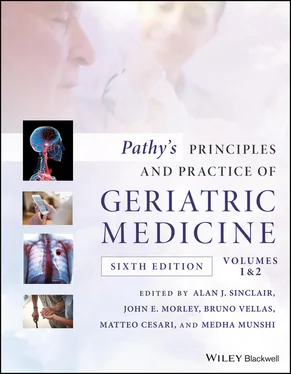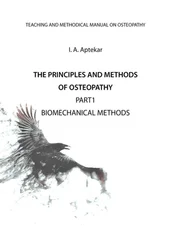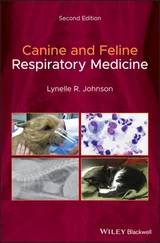Pathy's Principles and Practice of Geriatric Medicine
Здесь есть возможность читать онлайн «Pathy's Principles and Practice of Geriatric Medicine» — ознакомительный отрывок электронной книги совершенно бесплатно, а после прочтения отрывка купить полную версию. В некоторых случаях можно слушать аудио, скачать через торрент в формате fb2 и присутствует краткое содержание. Жанр: unrecognised, на английском языке. Описание произведения, (предисловие) а так же отзывы посетителей доступны на портале библиотеки ЛибКат.
- Название:Pathy's Principles and Practice of Geriatric Medicine
- Автор:
- Жанр:
- Год:неизвестен
- ISBN:нет данных
- Рейтинг книги:3 / 5. Голосов: 1
-
Избранное:Добавить в избранное
- Отзывы:
-
Ваша оценка:
- 60
- 1
- 2
- 3
- 4
- 5
Pathy's Principles and Practice of Geriatric Medicine: краткое содержание, описание и аннотация
Предлагаем к чтению аннотацию, описание, краткое содержание или предисловие (зависит от того, что написал сам автор книги «Pathy's Principles and Practice of Geriatric Medicine»). Если вы не нашли необходимую информацию о книге — напишите в комментариях, мы постараемся отыскать её.
Pathy’s Principles and Practice of Geriatric Medicine
Pathy's Principles and Practice of Geriatric Medicine — читать онлайн ознакомительный отрывок
Ниже представлен текст книги, разбитый по страницам. Система сохранения места последней прочитанной страницы, позволяет с удобством читать онлайн бесплатно книгу «Pathy's Principles and Practice of Geriatric Medicine», без необходимости каждый раз заново искать на чём Вы остановились. Поставьте закладку, и сможете в любой момент перейти на страницу, на которой закончили чтение.
Интервал:
Закладка:
Concomitant use of antiplatelets
30% of patients with NVAF who receive treatment with anticoagulants as primary stroke prevention receive antiplatelet agents concomitantly, with the risk of bleeding that this implies. The concomitant use of DOACs with antiplatelet agents has shown a decrease in the incidence of intracranial bleeding and other major bleeds but similar incidence of gastrointestinal bleeding when compared with VKAs and antiplatelets. 53
Duration of anticoagulant therapy
Stroke prevention in NVAF or prevention of thromboembolism from a prosthetic heart valve requires long‐term anticoagulation, and many elderly patients are prescribed anticoagulants for these reasons. Although data on the risk of VTE recurrence in elderly subjects are controversial, the risk could be considered no higher – and perhaps even lower – than in younger subjects. Because the risk of bleeding during anticoagulation treatment is higher in elderly subjects, three to six months of anticoagulant treatment in elderly patients with acute VTE is recommended. Extended anticoagulant treatment is not indicated in elderly patients, and any other decision should be carefully evaluated. 54
Start‐stop‐start anticoagulation
Starting anticoagulation in elderly patients
Sometimes, starting long‐term anticoagulation in an elderly patient is a complicated decision. In major functional impairment or when life expectancy is short, the benefit that anticoagulation could offer as primary prevention is questionable.
On the other hand, acetylsalicylic acid has been classically considered an alternative to anticoagulation, especially in older patients (regardless of function), in hopes of minimizing the risk of bleeding. There is no current evidence to recommend using salicylic acetic acid in the primary prevention of patients with AF or as a prescription after initial anticoagulation in patients with VTE, and its use is associated with an increased risk of bleeding. 15,54
Older patients need closer monitoring during the first month of anticoagulation because the risk of bleeding is higher in this period. 55‐57The elderly are at high risk of over‐anticoagulation at this time, particularly if standard rather than tailored induction doses are used. Siguret et al. have sought to develop a regimen for patients over 70, 58giving 4 mg daily of warfarin for three successive days and the daily maintenance dose according to an algorithm; they found this protocol safe and accurate in elderly hospitalized patients.
A crucial point to be considered is the patient’s preferences. It is important to explain the risks and benefits of anticoagulation. Providing adequate information and taking into account their opinion and preferences will result in better treatment adherence and thus fewer side effects. 59In a recent study carried out in Spain, patients taking DOACs (versus VKAs) showed lower perceived burdens and higher perceived benefits with anticoagulation, regardless of many clinical variables including age, sex, level of dependency, renal function, number of pills, thromboembolic or bleeding risk, comorbidities, and duration of treatment with anticoagulants. 60
Situations that force interruption of anticoagulation
Intracranial bleeding (ICB)
Based on observational studies, reinstitution of anticoagulation after ICB is associated with a lower risk of thromboembolic complications and a similar risk of intracranial haemorrhage recurrence. The recommendations regarding the best time to restart anticoagulation are not clear; we should consider the type of ICB (the risk of recurrence is greater in subarachnoid haemorrhage than intraparenchymal) and if the previous drug should be changed or replaced. More studies are needed for risk stratification for the subtype of stroke, localization and severity of ICB, and different anticoagulant drugs and exposure level. 61,62
Surgical interventions
In general, anticoagulant therapy should be stopped before the vast majority of surgical and other invasive procedures, but not stopping anticoagulant therapy is acceptable for low‐risk procedures with a risk of very minor or clinically insignificant bleeding. 63
Based on the available evidence, the use of heparin bridging would only be for patients with a high thromboembolic risk. In patients being treated with a VKA, it is sufficient to start LMWH or UFH when the INR is less than 2 or, where this value is not available, when two to three doses of the drug have been omitted. Bridging therapy is not necessary with DOACs.
It is recommended to resume anticoagulant therapy 24 hours after the procedure. As the anticoagulant effect of VKAs starts to set in at 24 to 72 hours, it is useful to manage heparin bridging therapy in patients with a high thromboembolic risk, but this recommendation is not necessary with DOACs. Reintroduction of oral anticoagulant therapy should be postponed for 48 to 72 hours only in patients with a high risk of postoperative bleeding. 63
Poor control of the INR
Maintaining an INR within the optimal range is more complicated as age increases, and labile INR is a risk factor for bleeding. 64Reduced time in therapeutic range (TTR, percentage of time a patient’s INR is within the desired therapeutic range, using the linear interpolation method of Rosendaal) is related to higher mortality. When the INR is not suitably controlled (considering TTR <65% in the last six months), changing the anticoagulant treatment should be considered.
Left atrial appendage closure could be a viable alternative to oral anticoagulation therapy for patients with NVAF who are considered poor candidates for long‐term oral anticoagulation or have any absolute contraindication. There is no current consensus on its indications and patient and device selection. 65
Definitive interruption of anticoagulation
In general terms, the withdrawal of thromboprophylaxis should be considered when the risk of maintaining it exceeds the benefit it provides. The decision can be easy in the presence of major bleeding or an absolute contraindication but is much complicated out of this context. There are no validated tools that help in decision‐making related to the deprescription of OAC in patients with NVAF. Petidier et al. 66recently proposed a paradigm shift: make a situational diagnosis based on the patient’s functionality and disease status. In patients with a poor prognosis approaching the end of life, the risks and burdens of anticoagulation may exceed the perceived benefits, in which case discontinuation of therapy may be appropriate.
Key points
When used appropriately, anticoagulants are highly effective drugs in the elderly. Age 85 or older may be an additional risk indication for anticoagulation.
The selection of the anticoagulant drug and its dose should be carried out individually and carefully, taking into account clinical geriatric criteria and patient preferences. Evidence suggests that patients with a greater burden of comorbidities appear to spend less time within the therapeutic international normalized ratio (INR) range, resulting in a lower quality of anticoagulation therapy.
It seems reasonable that patients who do not receive anticoagulant therapy should be limited to those with an obvious contraindication and those with a poor prognosis at the end of life.
In patients >75, DOACs as a class were superior to warfarin with respect to both efficacy and safety, showing similar efficacy in the prevention of stroke and systemic embolization. Apixaban had the lowest risk of major bleeding, and apixaban, edoxaban, and dabigatran had lower rates of intracranial haemorrhage than rivaroxaban or warfarin.
Читать дальшеИнтервал:
Закладка:
Похожие книги на «Pathy's Principles and Practice of Geriatric Medicine»
Представляем Вашему вниманию похожие книги на «Pathy's Principles and Practice of Geriatric Medicine» списком для выбора. Мы отобрали схожую по названию и смыслу литературу в надежде предоставить читателям больше вариантов отыскать новые, интересные, ещё непрочитанные произведения.
Обсуждение, отзывы о книге «Pathy's Principles and Practice of Geriatric Medicine» и просто собственные мнения читателей. Оставьте ваши комментарии, напишите, что Вы думаете о произведении, его смысле или главных героях. Укажите что конкретно понравилось, а что нет, и почему Вы так считаете.












